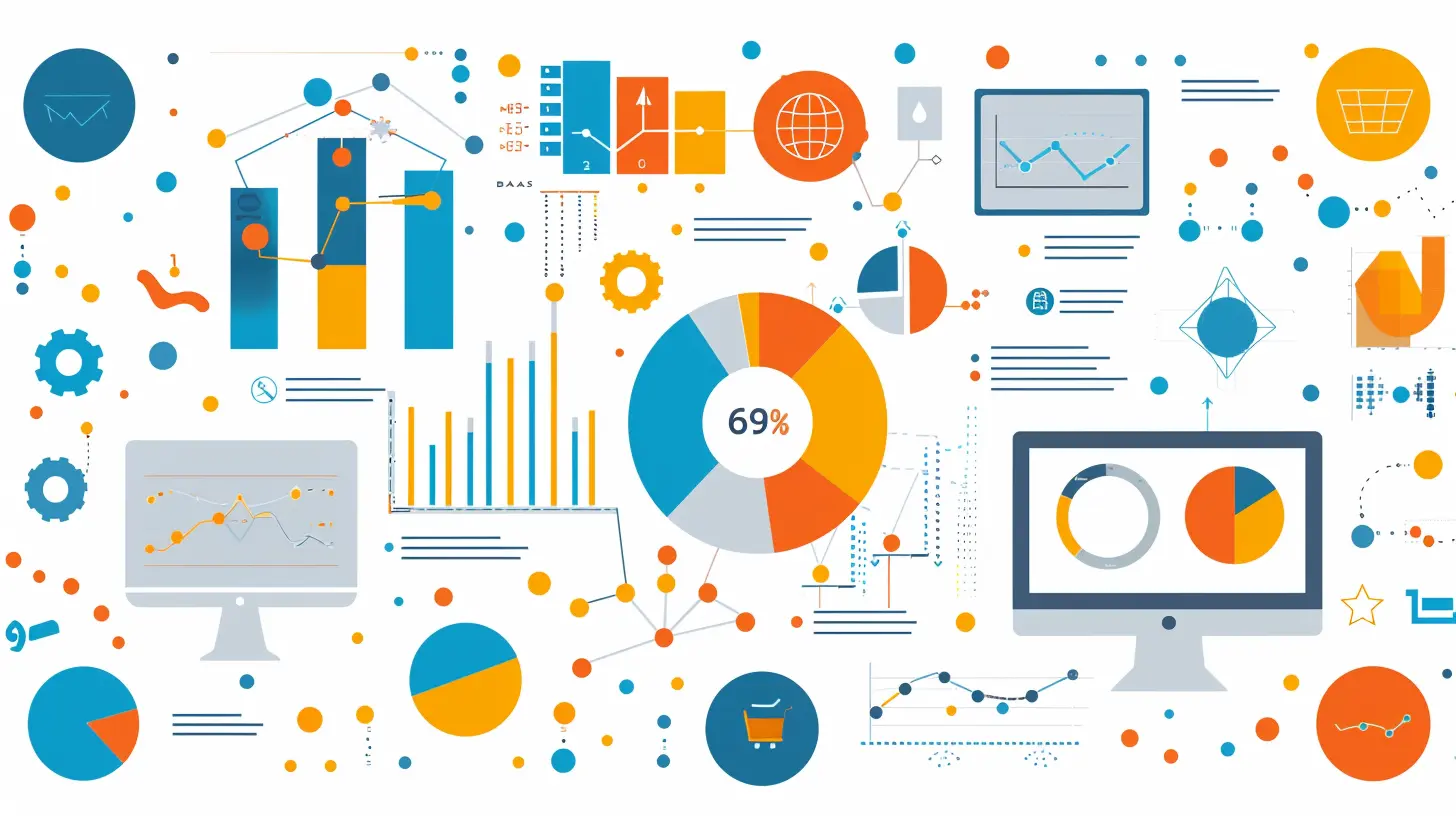From Raw Data to Actionable Insights: A Guide for Business Leaders
15 June 2025
In today’s data-driven world, businesses generate and collect massive amounts of information every second. But here’s the real question—what are you actually doing with all that data? If you’re just stockpiling numbers and figures without extracting meaningful insights, you’re sitting on a goldmine without a map.
Business leaders who know how to convert raw data into actionable insights have a significant competitive edge. They make better decisions, improve operations, and ultimately drive more revenue. But how do you get from unstructured data to strategic business moves?
Let’s break it down step by step. 
Why Data Alone Isn’t Enough
Having data is great, but data without insight is like having a puzzle with missing pieces. You might have numbers, charts, and reports, but if you don’t know how to interpret them, they’re just noise.Think about it—if you’re tracking customer behaviors, website visits, sales numbers, or supply chain efficiency, what’s the point unless you’re using that information to tweak your strategy and improve your business?
The real game begins when you extract meaning from the numbers and use it to make informed, strategic decisions. That’s where actionable insights come in. 
Step 1: Collect the Right Data
Not all data is created equal. The key is to focus on collecting quality data, not just quantity.1. Identify Your Business Goals
Before you even start collecting data, ask yourself:- What business problem am I trying to solve?
- What decisions do I need to make?
- What success metrics should I track?
These questions help you narrow down the exact type of data you need.
2. Gather Data from Reliable Sources
Once you have a clear goal, collect data from sources that align with those objectives. These could be:- Website analytics (Google Analytics, heatmaps, user behavior)
- Customer feedback and surveys
- Sales reports and financial statements
- Social media interactions
- Industry benchmarks and market trends
When your data sources are reliable, you’ll have a strong foundation to build insights upon. 
Step 2: Organize and Clean Your Data
Data is often messy—full of duplicates, missing values, and inconsistencies. If you don’t clean it, your insights can be misleading.1. Eliminate Duplicates
Duplicate data can skew your results. Imagine trying to determine customer retention rates, but you count the same customer twice—your numbers would be off.2. Fill in the Gaps
Missing data happens, but you need a strategy to deal with it. Either remove incomplete entries or use techniques like data interpolation to fill in reasonable estimates.3. Standardize Formats
Different data sources often use different formats. For instance, one system might record dates as "MM/DD/YYYY" while another uses "YYYY-MM-DD." Consistency is key for meaningful analysis.Once your data is clean and structured, you’re ready for the next step—analysis. 
Step 3: Analyze and Extract Meaning
This is where the magic happens. Now that your data is in good shape, it’s time to analyze it for insights that will drive business decisions.1. Use Data Visualization
Raw numbers can be daunting. Visualization tools like charts, graphs, dashboards, and heatmaps make it much easier to spot trends, correlations, and anomalies.For instance, if you’re analyzing customer behavior on your website, a heatmap can show you exactly where users spend most of their time—helping you optimize page layouts and calls to action.
2. Identify Patterns and Trends
Spotting a trend before your competition does? That’s a game-changer.Let’s say your sales data shows a spike in demand for a certain product every December. That’s not just a coincidence—it’s an opportunity. You can use that insight to ramp up marketing and inventory before the next holiday season.
3. Predict Future Outcomes
Predictive analytics uses historical data to forecast future trends. For example:- Retailers can predict which products will be in demand next season.
- Healthcare providers can anticipate patient needs based on past treatment data.
- Marketing teams can forecast which campaigns will generate the most engagement.
By leveraging these predictions, you can take proactive steps rather than reacting after the fact.
Step 4: Turn Insights into Action
Insights are useless unless you actually use them. The last and most important step is taking action based on the data.1. Make Data-Driven Decisions
Once you’ve identified key insights, apply them strategically:- If customers are abandoning their shopping carts, streamline the checkout process.
- If social media engagement is low, tweak your content strategy.
- If sales are dipping in a specific region, reconsider your marketing approach there.
2. Automate Where Possible
Manually processing data can take forever. Fortunately, AI and automation tools can help:- CRM systems can analyze customer interactions and suggest the best time to follow up.
- Chatbots can use past data to predict and answer common customer queries.
- Inventory management tools can adjust stock levels automatically based on demand forecasts.
3. Measure Results and Refine
Data-driven decision-making isn’t a one-time thing—it’s an ongoing cycle. Once you implement changes, continuously monitor your results:- Did your website changes increase conversions?
- Did your new marketing strategy boost engagement?
- Did your operational improvements reduce costs?
Keep refining and optimizing based on new data. The better you get at this process, the more competitive your business becomes.
The Competitive Advantage of Actionable Insights
In today’s fast-moving business landscape, gut feelings and guesswork won’t cut it. The most successful companies are the ones that harness data effectively to drive better decisions.By turning raw data into actionable insights, you:
✅ Improve efficiency and productivity
✅ Reduce risks and make informed investments
✅ Enhance customer experiences
✅ Stay ahead of competitors
Data is power, but only if you know how to use it. With the right approach, you’re not just collecting numbers—you’re creating a roadmap for success.
So, are you ready to turn your data into real business growth? The choice is yours!
all images in this post were generated using AI tools
Category:
Business AnalyticsAuthor:

Matthew Scott
Discussion
rate this article
2 comments
Opal Anderson
This article offers invaluable guidance for business leaders looking to transform raw data into actionable insights. By understanding the importance of data analysis and strategic implementation, leaders can drive informed decision-making and enhance overall business performance. A must-read for anyone aiming to leverage data for competitive advantage!
November 13, 2025 at 4:47 AM

Matthew Scott
Thank you for your insightful comment! I'm glad you found the article helpful in navigating data analysis for enhanced decision-making.
Starla Roberson
Great article! Turning raw data into actionable insights can feel daunting, but with the right approach, it’s like discovering a treasure map for your business. Embrace the journey—your next big breakthrough might be just a data point away!
June 16, 2025 at 10:33 AM

Matthew Scott
Thank you for your kind words! I'm glad you found the article helpful—turning data into insights truly is a rewarding journey!


